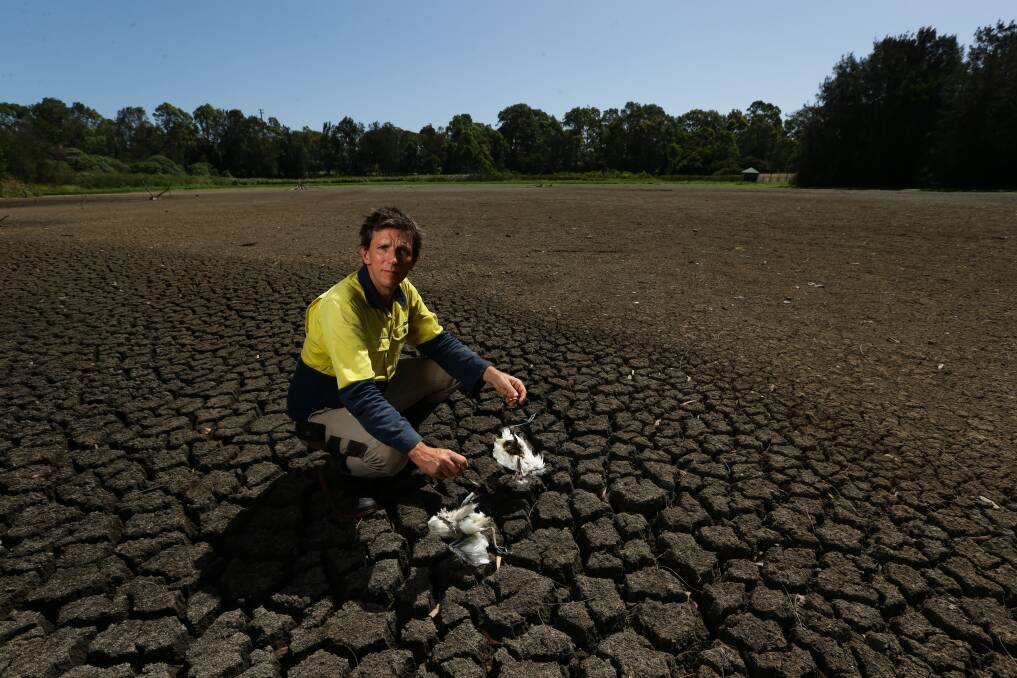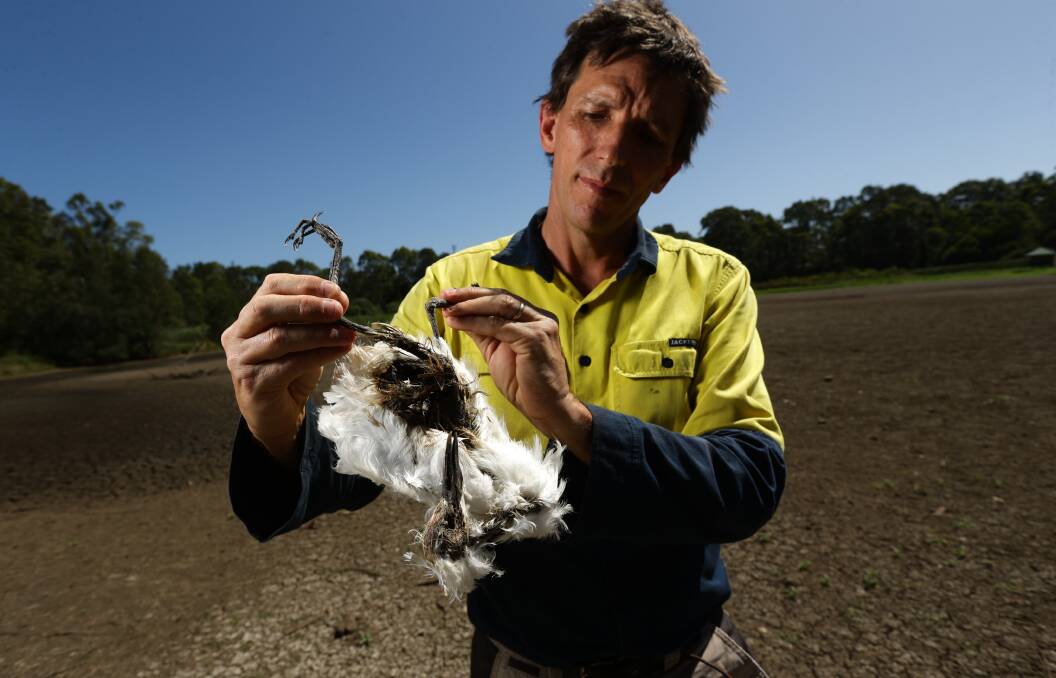
Egrets are to wetlands what canaries are to mines, a Hunter wildlife expert says – if the egrets are fine, then so are the wetlands.
Subscribe now for unlimited access.
$0/
(min cost $0)
or signup to continue reading
That’s why Dr Stuart Blanch, the CEO of Hunter Wetlands Centre, was so dismayed to find about 100 dead egret chicks at the Sandgate conservation area last week, as hot weather dried-out the ecosystem.
“When the egrets are in trouble, the wetlands are in trouble,” he said.
“These are high level predators. They eat fish, snakes, aquatic insects, frogs – that’s the top of the food chain, almost.
“They need everything else in the wetland to be going right. The flooding, the water quality, not too many weeds, the rest of the food chain. We love them and we love seeing them around. They are evidence that the ecosystem is working well.”

Dr Blanch estimated there were about 200 nests on the property, each containing one or two chicks, which meant between a quarter and half of the young birds were lost in the heat wave. While the weather was also a challenge this time last year, Dr Blanch said last week’s harsh conditions were worse.
Blistering temperatures reached the mid 40s on the worst day, January 6.
“Birds can’t handle that, particularly young chicks,” he said. “We had dozens leaving our property. It was stinking hot and there was no water. A lot of the chicks that died were two, three, four weeks old.”
When Hunter Water heard of the wetlands’ plight, the utility donated three million litres of water to soak part of the dry wetlands and provide relief for the birds. Hunter Water said it was possible because of conservation steps that had helped save water.
“Just like at the wetlands, the warm and dry summer conditions have also taken their toll on Hunter Water’s dams, which are at their lowest summer levels in more than a decade,” Hunter Water’s managing director Jim Bentley said.
“Hunter Water has made significant inroads to reduce our own leakage, including by using new tools to manage our water network better.”
Hunter Wetlands was established in 1985 and was added to the list of Wetlands of International Importance in 2002, according to the NSW Office of Environment and Heritage.
There is an estimated 200 plant and bird species at the site.


